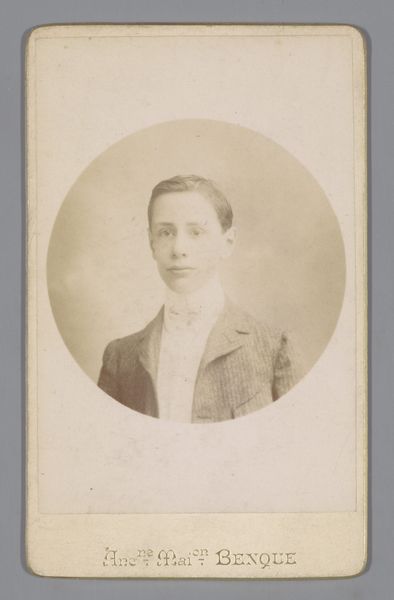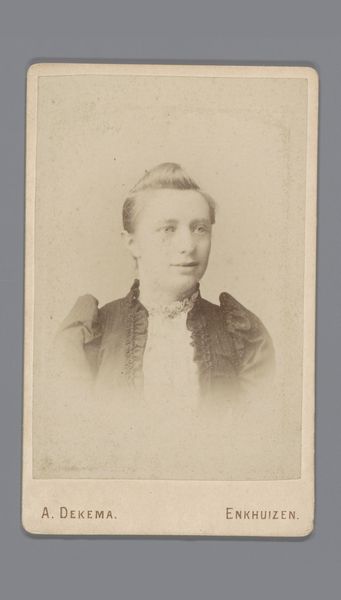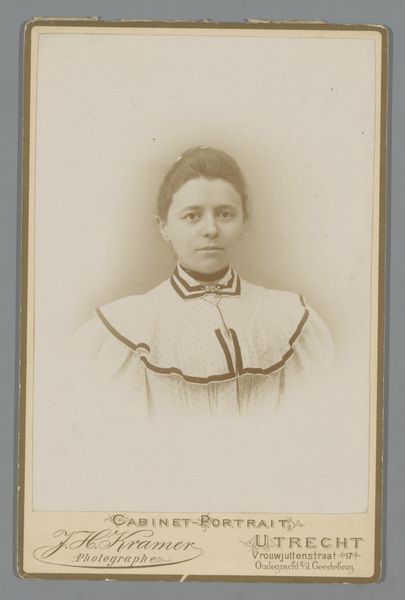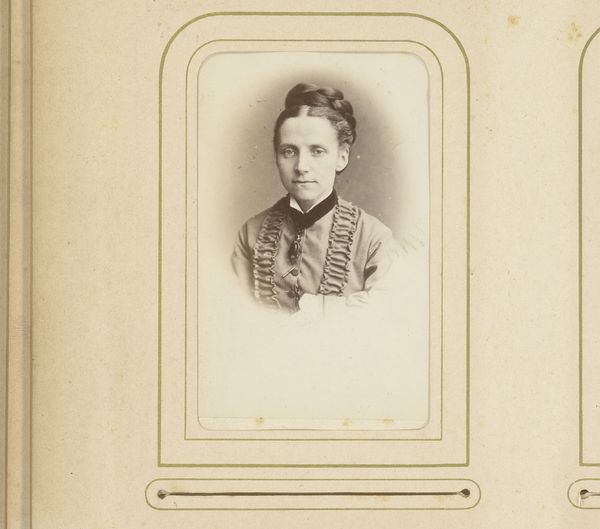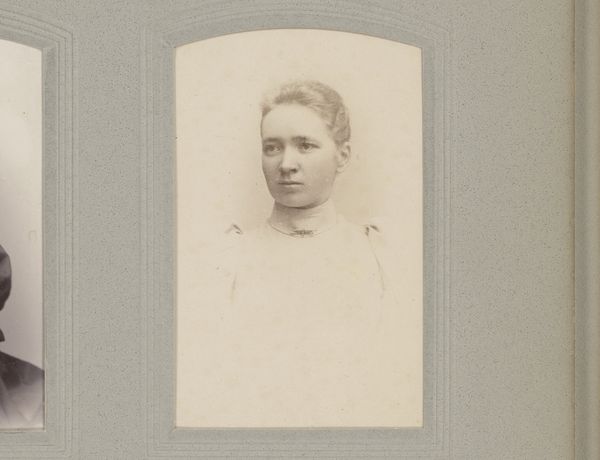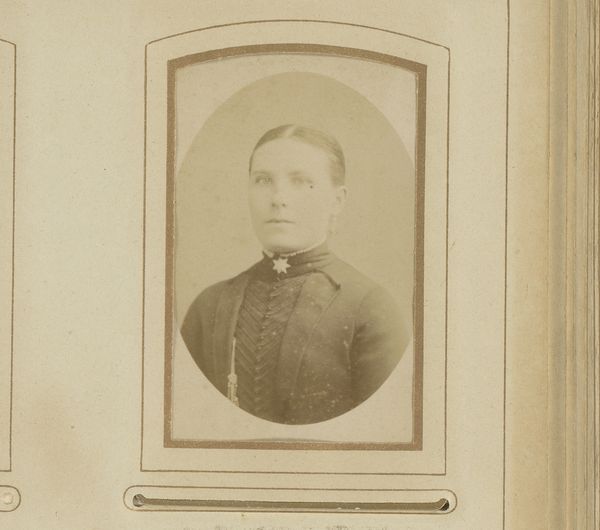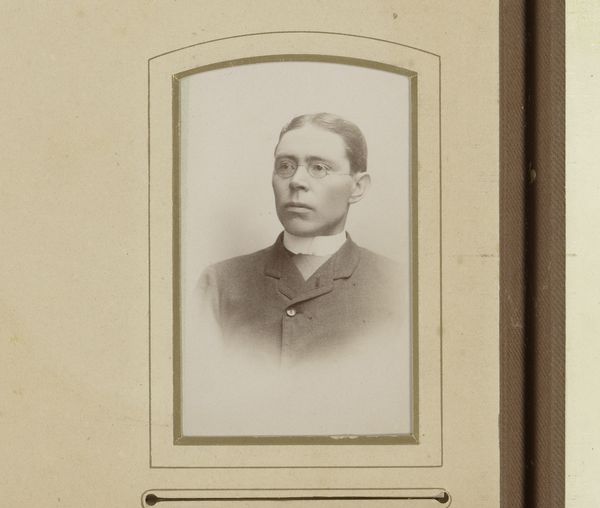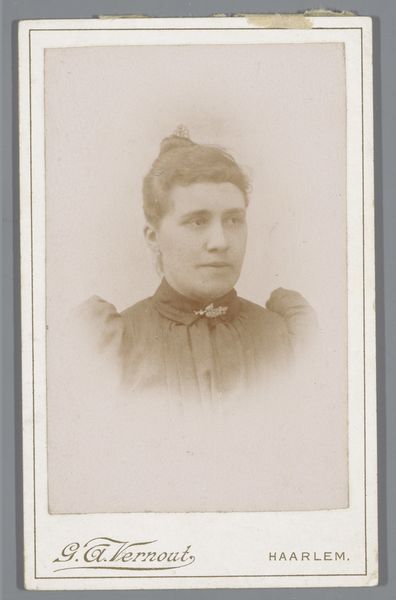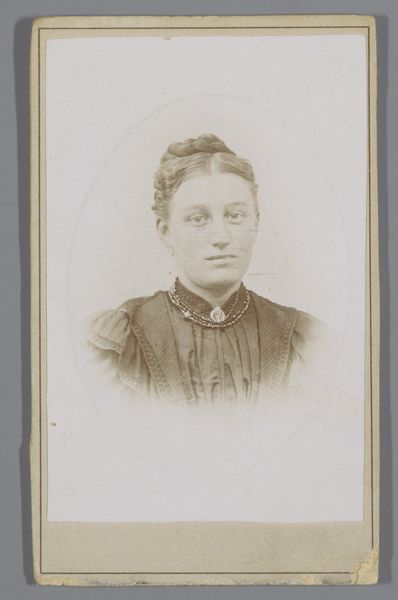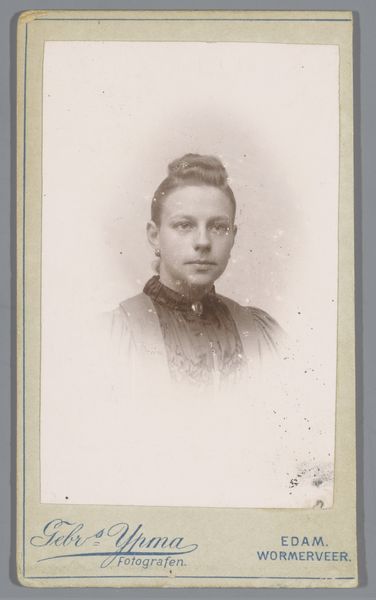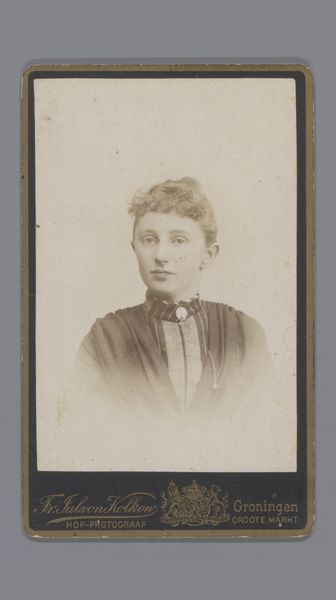
photography
#
photography
#
realism
Dimensions: height 105 mm, width 65 mm
Copyright: Rijks Museum: Open Domain
Curator: This photograph, entitled "Portret van een onbekende vrouw," or "Portrait of an Unknown Woman" in English, was created sometime between 1881 and 1901 by Carel Frederik Cordes. It's a wonderful example of late 19th-century photography and demonstrates the style of realism in a compelling manner. Editor: It has a subdued and delicate mood. The woman looks directly at the viewer, her gaze feels quite composed but not very revealing. The tonal range is very subtle; is it the consequence of age or inherent to the printing process of the time? Curator: Well, this photographic portrait reflects the rise of studio portraiture and its democratization due to technological advances in the late 19th century. Photography studios proliferated, offering access to portraiture for the middle class. We should question who was excluded from this access as well. Editor: Absolutely. Considering that women often found themselves on the margins of history, with less opportunity and more oppression. I cannot stop but wondering who she was, what her possibilities or oppressions were at the time. What does this image, the very act of commissioning the photograph itself, mean in light of this exclusion? Is there a form of agency at play? Curator: It's possible. We need to understand the power dynamics inherent in image making, especially within portraiture during that time. Cordes was a known photographer operating a studio. He would have set the scene, literally and figuratively. But to your point, the woman is not just a passive subject. Her direct gaze… Editor: It confronts, doesn’t it? She's meeting the eyes of the viewer—past, present, future. There is something about the setting too: it appears the picture may have been heavily posed, or perhaps this rigidity stems from the duration necessary to take photograph at the time. Regardless of that, it transmits dignity. Curator: I agree. This image serves as a poignant reminder of how photography shaped social identity and representation in that period, whilst providing us a portal for contemporary interrogation regarding inclusion, social commentary, and identity, among other core factors. Editor: Yes, the work reminds us how photography not only captured moments in time but also participated in shaping collective memory and social narratives. It's quite insightful.
Comments
No comments
Be the first to comment and join the conversation on the ultimate creative platform.
